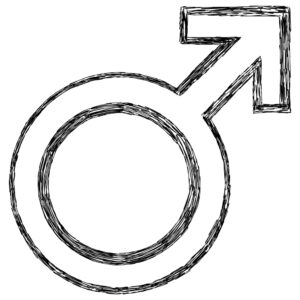Around 2015, the (previously obscure) term ‘toxic masculinity’ settled into cultural discourse. At first it described a style of masculinity that supports misogyny and violence, Andrew-Tate-style. But gradually the concept expanded, referring now to ‘men behaving badly’ in a range of ways.
 Used as shorthand for certain types of teenage boys to steer clear of, toxic masculinity grew into a catch-all descriptor for a broad spectrum of male behaviour. Some of the behaviours are easy to spot: homophobia, sexism, gender based violence. Others are tricky to pin down: it could be an attitude, a whiff of aloofness, an element of aggression. Yet the term stands and is used a lot.
Used as shorthand for certain types of teenage boys to steer clear of, toxic masculinity grew into a catch-all descriptor for a broad spectrum of male behaviour. Some of the behaviours are easy to spot: homophobia, sexism, gender based violence. Others are tricky to pin down: it could be an attitude, a whiff of aloofness, an element of aggression. Yet the term stands and is used a lot.
In the ebb and flow of culture trends, concepts such as this – ways to describe the world – rise meteorically. Then they soon fade into obscurity. The terminology we take for granted today will inevitably dwindle into tomorrow’s forgotten concept. But for now, ‘toxic masculinity’ is here to stay and has created a ‘looping effect’ to use Ian Hacking’s term: ‘Classification changes people’. By using the term it becomes a cultural category, leading to using the term more, leading to further toxic-masculinity-type behaviour, leading to spotting the behaviour in places where we previously would have seen other things … hence the looping effect.
So where did ‘toxic masculinity’ come from?
The term surfaced in academic circles around 2013 – 2015, morphing gradually into a synonym for misogyny, ‘a specific form of masculinity and a specific set of social expectations that are unhealthy or dangerous’. Carol Harrington, in her exploration of the term’s ascent, remembers the moment, in 2018, when she became aware of how widespread it had become:
…during a discussion of mass rampage shootings in my “Violence” class, one student commented that the weekly reading’s analysis of mass shooters described “toxic masculinity,” although it did not use the phrase. I was struck by the confidence with which the student referenced the term as a concept anyone would know. On my way home that day, I tuned into a radio interview with Clementine Ford discussing toxic masculinity as the theme of her book Boys Will be Boys. I wondered where this term had come from and why everyone was suddenly talking about it.
Harrington’s research charts the exponential rise of the term post-2014, particularly in non-academic contexts. This paralleled political shifts such as ‘Trumpism and the #metoo movement’. Toxic masculinity is used to ‘signal disapproval’, she says, but its definition remains elusive.
But maybe that’s the whole point. Similarly to ‘The Narcissist’ or ‘toxic parents’, the concept offers something to shun. It creates a dividing line.
Like other concepts in the algorithmic echo chambers of polarised social media, concept creep is inescapable. And here too, the emphasis has been displaced from the ‘toxic’, to bigger questions about masculinity.
‘A toxic <=> healthy binary’
Harrington says that despite its critical, progressive intentions, ‘toxic masculinity’ introduces a rigid, individualistic ‘toxic / healthy binary’. This ‘reinforces gender divisions and hierarchies’, instead of challenging them.
What we can also miss in this ‘good versus bad’ framing is the developmental context within which many of these behaviours typically arise. Going back to old-school psychoanalytic thinking, I remember Moses Laufer’s work from the 60s. His recognition of the fragility hiding under the excess and bravado of the ‘over masculine young man’ in early adolescence is worth remembering.
Avoiding the feminine
Laufer thought this vulnerability stems from a struggle to fight ‘the manifestations of a feminine identification’ that can feel terrifying to young men, for a time. There is also a running away from echoes of childhood and dependence that are still close to the surface and which, in early adolescence, feel unacceptable. Anything ‘soft and girlie’ bears dangerous resemblance to the earlier dependence on the mother of childhood.
Thankfully, in most cases ‘toxic masculinity’ in early adolescence runs skin deep, similarly to young children aspiring to be superheroes for a time. It can be hard to disentangle this from the real effects of gender-based violence that still very much exists. Yet disentangling the two is vital, as the risk otherwise is yet another layer of polarisation. Which is where we are at the moment.
Boys versus girls
As the condemnation of toxic masculinity grows louder, boys today increasingly perceive feminism as a threat. Recently this made the rounds in the media:
What a depressing trend. How do we address young men’s mental health within this polarisation, stepping outside the ‘toxic / healthy’ binary?
A recent podcast episode features Neil Smith and Alex George discussing some of this. How can men and boys be helped with their mental health in a world where “toxic masculinity” can appear sometimes like one of the few options of how to be a man? Smith and George remind us that “anger has traditionally been the only acceptable emotion for men to express”, maintaining the impasse we find ourselves in.
In the podcast, they ask:
Is what we are witnessing ‘toxic masculinity’: or is it misplaced masculinity?
Why is men’s mental health different to women’s? Young men’s mental health is routinely overlooked as they find it much harder to access mental health services, and their risk of completed suicide has consistently being higher than women’s.
How can men identify as masculine in a healthier and more individual way that can encompass a range of possibilities?
I think that labelling young men with ‘toxic masculinity’ mirrors the centuries-old dismissal of young women as ‘hysterical’ or ‘manipulative’. It blocks all hope for meaningful dialogue and understanding and it feeds and deepens the ever louder polarisation we are in.

I’m doing a D Prof currently, looking at the effects of this trope on men and what has been missed while we’ve been focussing on women’s rights